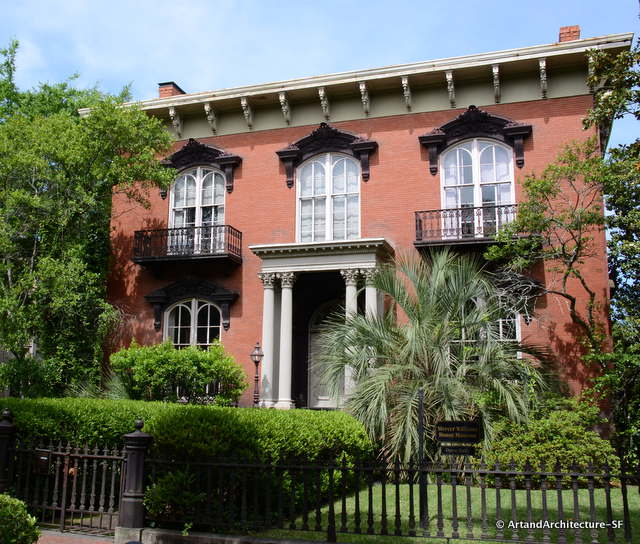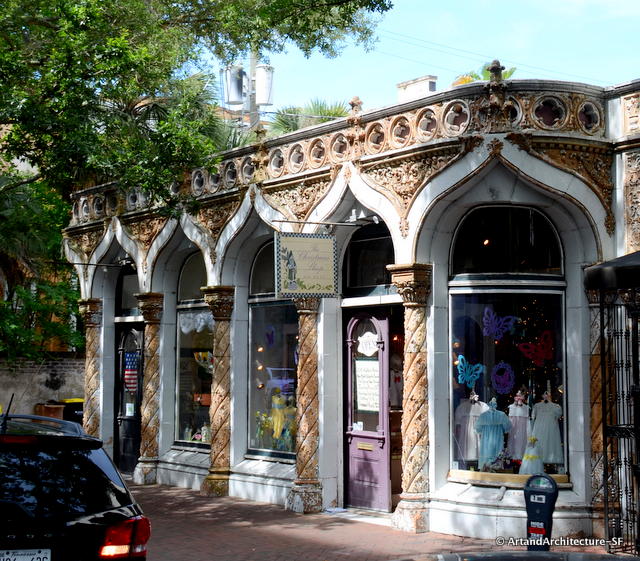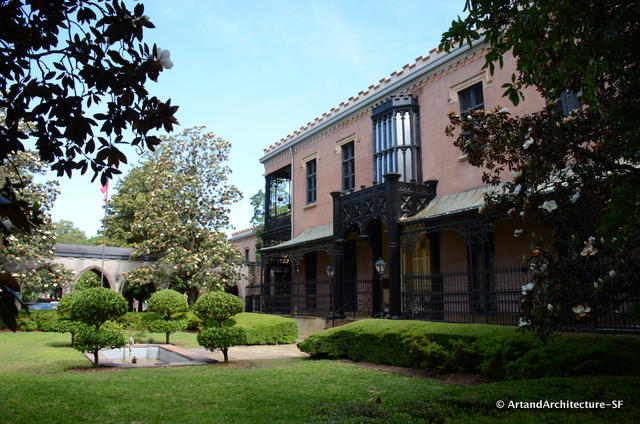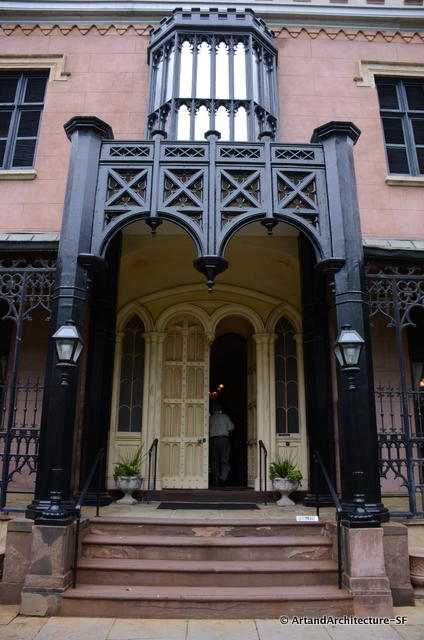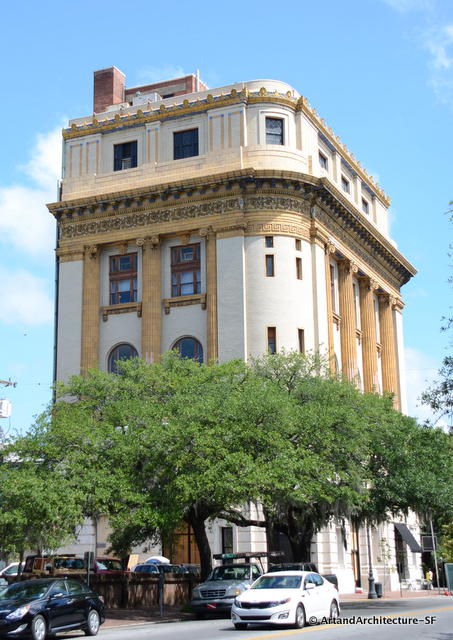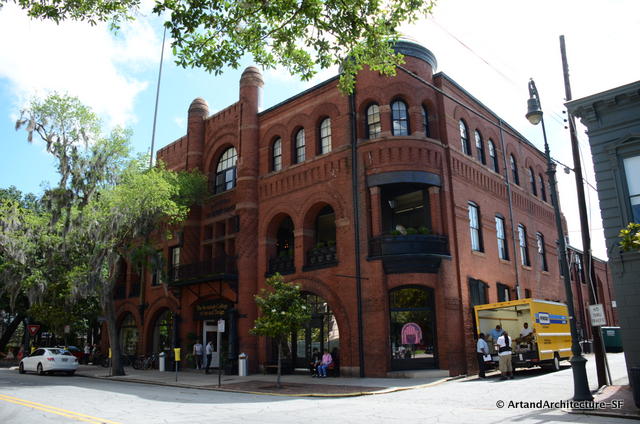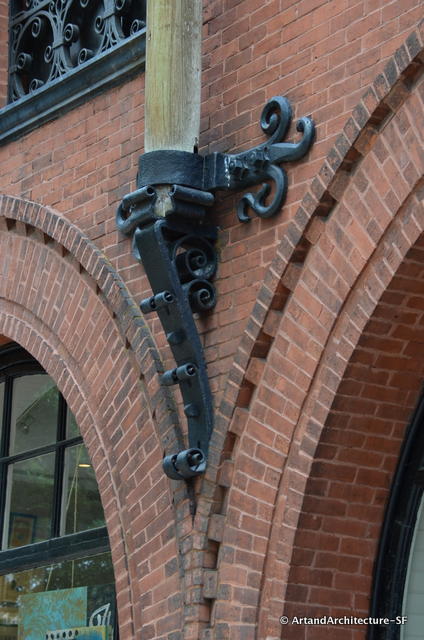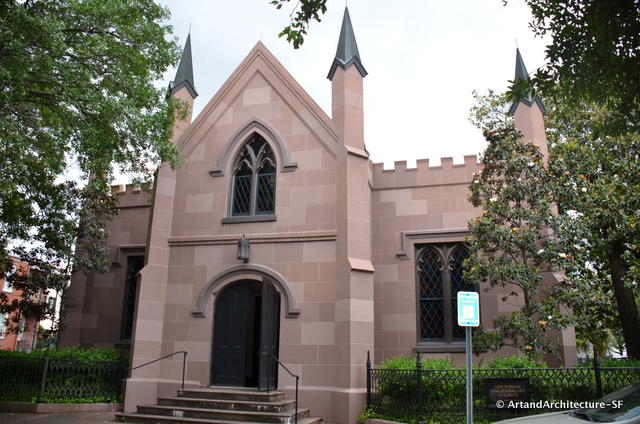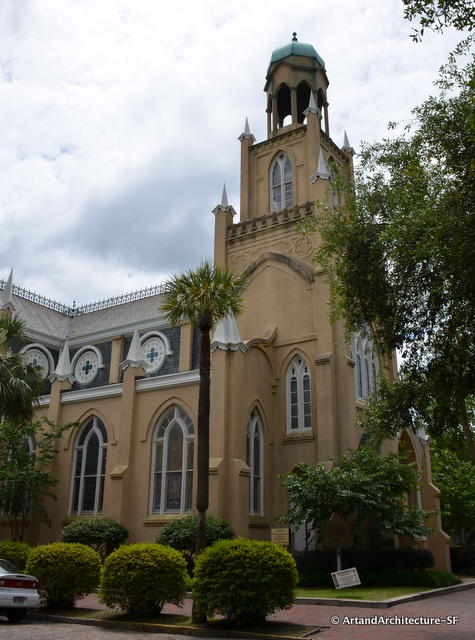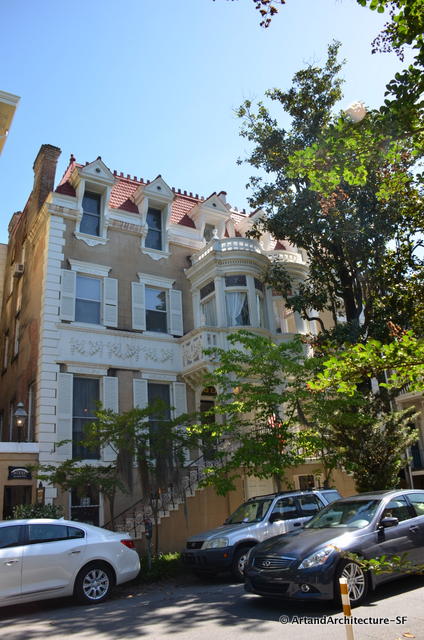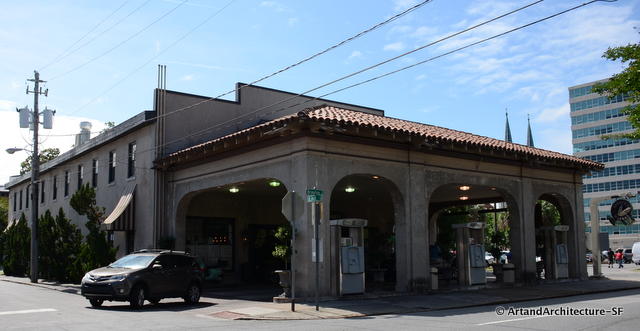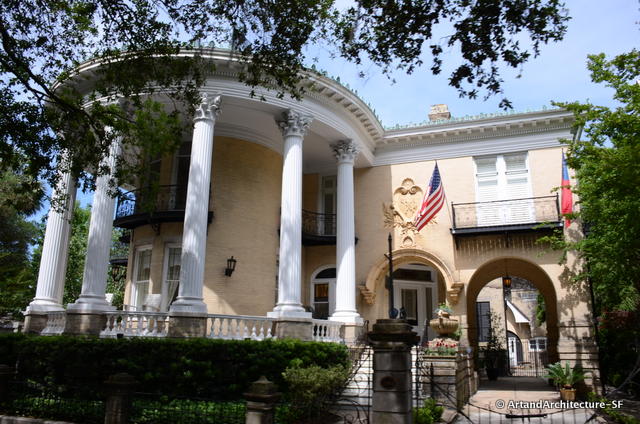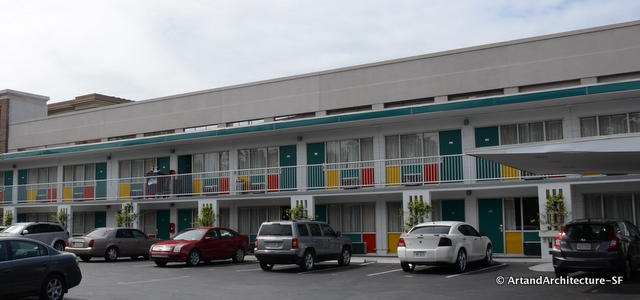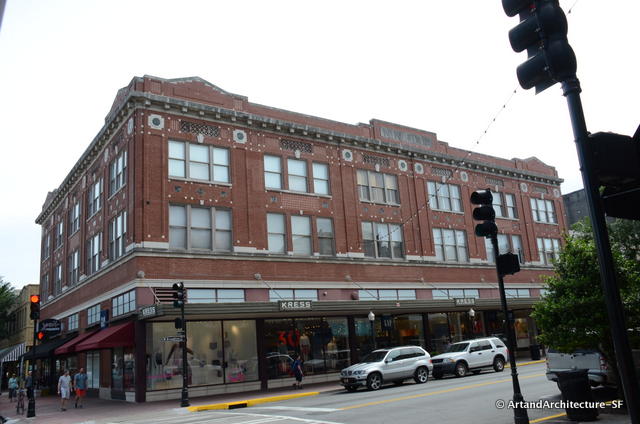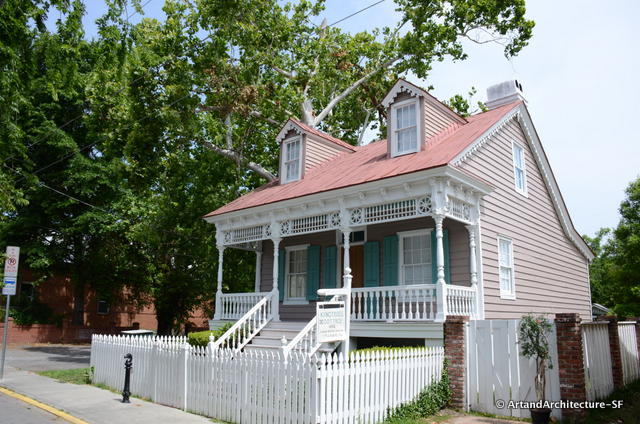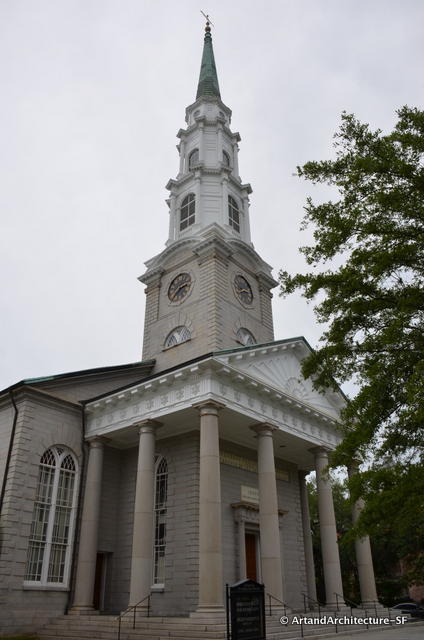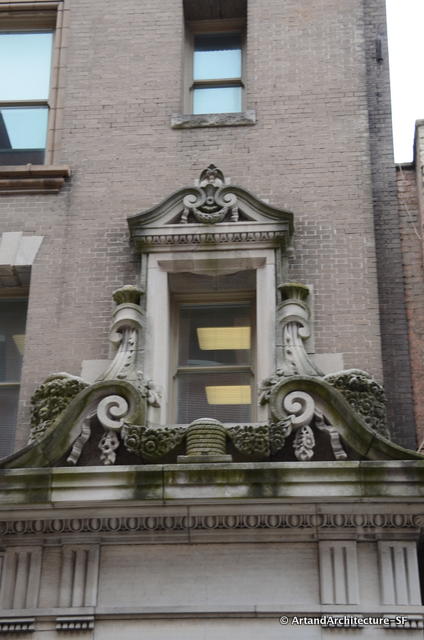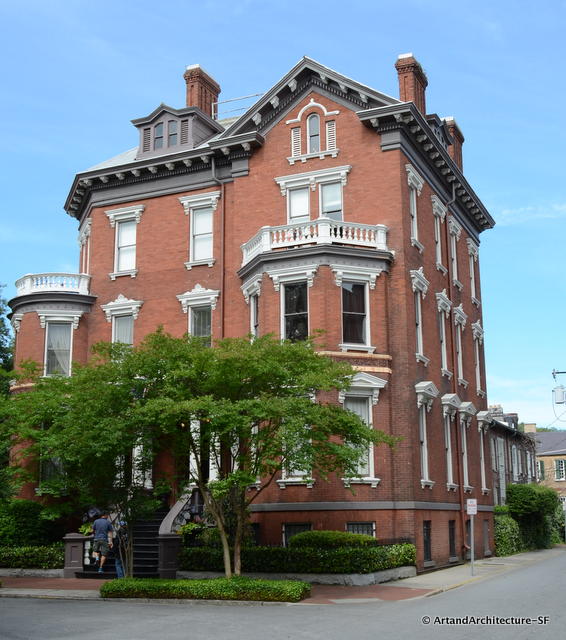The architectural styles of Savannah are varied and, thanks to many preservationists, available for us all to study. There are hundreds of tour companies, riding in a variety of vehicles or by foot. There are many books out on Savannah Architecture, better forums than here to get a decent education. I will also say that it would take a lifetime to cover all of the items that are worth studying in Savannah Architecture, for that reason I am presenting, either some of my favorites or items that have the best of their style.
The Davenport House is the first home saved in the preservation movement. The Federal, or Adam, style dominated the American architectural landscape from roughly 1780 to 1840, having evolved from Georgian, the principal design language of the colonial period.
The Italianate Style Mercer House was designed by John Norris in 1871, a prolific architect in Savannah during this time.
Another Italianate house is the rather grand Armstrong House, built in 1819 for the Armstrong family.
The Andrew Low House, a John Norris home completed in 1849 has hallmarks of an Italianate home with bits of Greece. This home was the home of Julliet Gordon Low, founder of the Girl Scouts. She married the son of the original owner and received the home after her husband’s death. The first headquarters for the Girl Scouts is located in the carriage house in the back.
Known locally as the Ford dealership, this quirky building stands out with its ogee arch and quatrefoil motif. The stunning spiral columns are topped with Arabic inspired arches.
The Green-Meldrim house is another John Norris building, I fell in love with the entry portico.
This neoclassical Scottish Rite Temple places its prettiest face on the top floor. The temple was built in 1913 by Hyman Wallace Witcover, and has lovely terra-cotta along the top.
This Romanesque Style building, designed by William Gibbons Preston and completed in 1892 is flanked by cannons and black metal work that takes your breath away.
Another wonderful Romanesque Style building is the Cotton Exchange.
This odd little gothic church was designed by John Norris and finished in 1851. The Reverend John Pierpont Jr.’s brother James was the organist and the choir director. James composed “Jingle Bells” while living in Savannah. Their nephew, by the way, was John Pierpont Morgan.
Another gothic style house of worship is the Mickve Israel Synagogue. It was built in 1876 and designed by Henry G. Harrison.
Built in 1869 one side of this pair of townhouses was built for Daniel J. Purse, a one time mayor of Savannah. A renovation in 1897 added the projecting Bays that go out over the sidewalk and the mansard Roof. This excessiveness, somewhat hidden behind the trees, is what gives Savannah its whimsy.
This shining example of adaptive re-use was special even before it was a grocery store. Built in the 1920s this Arthur Comer designed building combined a gasoline station with both automobile sales and its service facility.
This neoclassical building by Gottfried Norman was built in 1903.
Built in 1964, the Thunderbird is still a fun place to stay in Savannah.
This Art Deco building is from 1923.
Originally built in 1896 by W. W. Aimar this Victorian, gingerbread ornamented cottage is now the Museum of Black History.
This High Victorian Gothic church, Cathedral of St. John the Baptist, was built in the 1870s and designed by E. Francis Baldwin. If you have the opportunity to visit inside, it is a must! The support columns are cast iron, faux painted as marble. There are murals, and paintings and ornamentation, and windows, and alters, and……well you get the picture.
Built in 1816 and designed by John Holden Greene in the English Restoration style, this church sits on land granted directly from King George II to the Church.
These windows are the most ornamental portion of the Citizens Bank, now occupied by Savannah College of Art and Design.
This Queen Anne building was built for William Kehoe in 1893. Architect Dewitt Bruyn used the railings, brackets, moldings, and interior ceiling medallions made by Kehoe’s iron company to help advertise their availability.
This is just a smattering of the unbelievable variety of architecture in Savannah, but I hope I have shown you a good idea of what you can expect.
There are several books about that help to guide you around town if you want to do a tour on your own.
The National Trust Guide to Savannah
Savannah Architectural Tours by Jonathan Stalcup. Jonathan also gives a spectacular tour.

